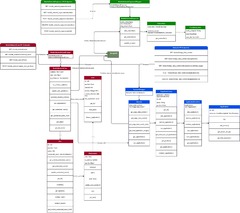| dc.contributor.advisor | Andersen, Anders | |
| dc.contributor.advisor | Munch-Ellingsen, Arne | |
| dc.contributor.author | Fasteraune, Fredrik Hagen | |
| dc.date.accessioned | 2023-07-11T07:39:11Z | |
| dc.date.available | 2023-07-11T07:39:11Z | |
| dc.date.issued | 2023-06-01 | |
| dc.description.abstract | One of the novel new features of mobile 5G networks is what is commonly known as "Ultra Reliable Low Latency" communication.
To achieve the "Low Latency" part, it is necessary to introduce processing and storage capabilities closer to the radio access network, thus introducing Edge data centers.
An Edge data center will be capable of hosting third-party applications and a user of these applications can access them using the cellular mobile network.
This makes the network path between the user equipment (UE) and the application short in terms of physical distance and network hops, thus reducing the latency dramatically.
This thesis looks into these new features of the 5th-generation mobile networks to establish if, and how they can be used to orchestrate container-based applications deployed at edge data centers.
The orchestration mechanism suggested will be described in more detail in the thesis body but as an overview, it involves using the user's positions and the knowledge about which applications the users are accessing and information about where these applications reside to move applications between edge data centers.
One of the 5G exploration findings was that the location of users in a 5G network can be determined using the Network Exposure Function (NEF) API.
The NEF is one of the new 5G network functions and enables trusted third-party actors to interact with the 5G core through a publisher-subscriber-oriented API.
The proposed orchestration strategy involves calculating the ``weighted average location'' of 5G users who have accessed the specific application residing in the Edge within a specified time frame.
A live 5G network with a stand-alone (SA) core was not available at the time of writing and part of the thesis work has therefore been to identify if there exist network emulators with the functionality needed to reach the goal of this thesis, i.e. design and implement the orchestrator based on interaction with the network.
More specifically: can we find a NEF emulator that can be configured to give us network data related to user equipment location? Unfortunately, the three alternatives considered: Open5Gs, NEF\_emulator, and Nokia's Open5Glab do not fully meet our requirements for generating user events.
Open5Gs an open source 5G network implementation lacks the whole NEF north-bridge implementation, NEF\_emulator has limited implementation and integration complexities, and Nokia's Open5Glab's simulated users are inactive and thus do not generate sufficient data.
Given the absence of suitable emulators to generate the needed data, the thesis pivoted to also include the design and implementation of a mobile network emulator with the following key components: a mobile network abstraction that encompasses crucial elements from 5G, such as users and radio access nodes, allowing users to connect to the mobile network; a network abstraction that hosts emulated edge data centers and the corresponding applications accessible to connected users; and mobile network exposure that exposes mobile network core events through a simplified NEF north-bound API implementation.
Finally, the thesis concludes by implementing the proposed orchestration strategy using the mobile network emulator, demonstrating that orchestrating can effectively reduce the end-to-end latency from users to applications, as evidenced by the obtained results. | en_US |
| dc.identifier.uri | https://hdl.handle.net/10037/29605 | |
| dc.language.iso | eng | en_US |
| dc.publisher | UiT Norges arktiske universitet | en_US |
| dc.publisher | UiT The Arctic University of Norway | en_US |
| dc.rights.accessRights | openAccess | en_US |
| dc.rights.holder | Copyright 2023 The Author(s) | |
| dc.rights.uri | https://creativecommons.org/licenses/by-nc-sa/4.0 | en_US |
| dc.rights | Attribution-NonCommercial-ShareAlike 4.0 International (CC BY-NC-SA 4.0) | en_US |
| dc.subject.courseID | INF-3981 | |
| dc.subject | VDP::Technology: 500::Information and communication technology: 550::Computer technology: 551 | en_US |
| dc.subject | VDP::Teknologi: 500::Informasjons- og kommunikasjonsteknologi: 550::Datateknologi: 551 | en_US |
| dc.title | Exploring the inner mechanisms of 5G networks for orchestrating container-based applications in edge data centers | en_US |
| dc.type | Master thesis | en_US |
| dc.type | Mastergradsoppgave | en_US |


 English
English norsk
norsk

